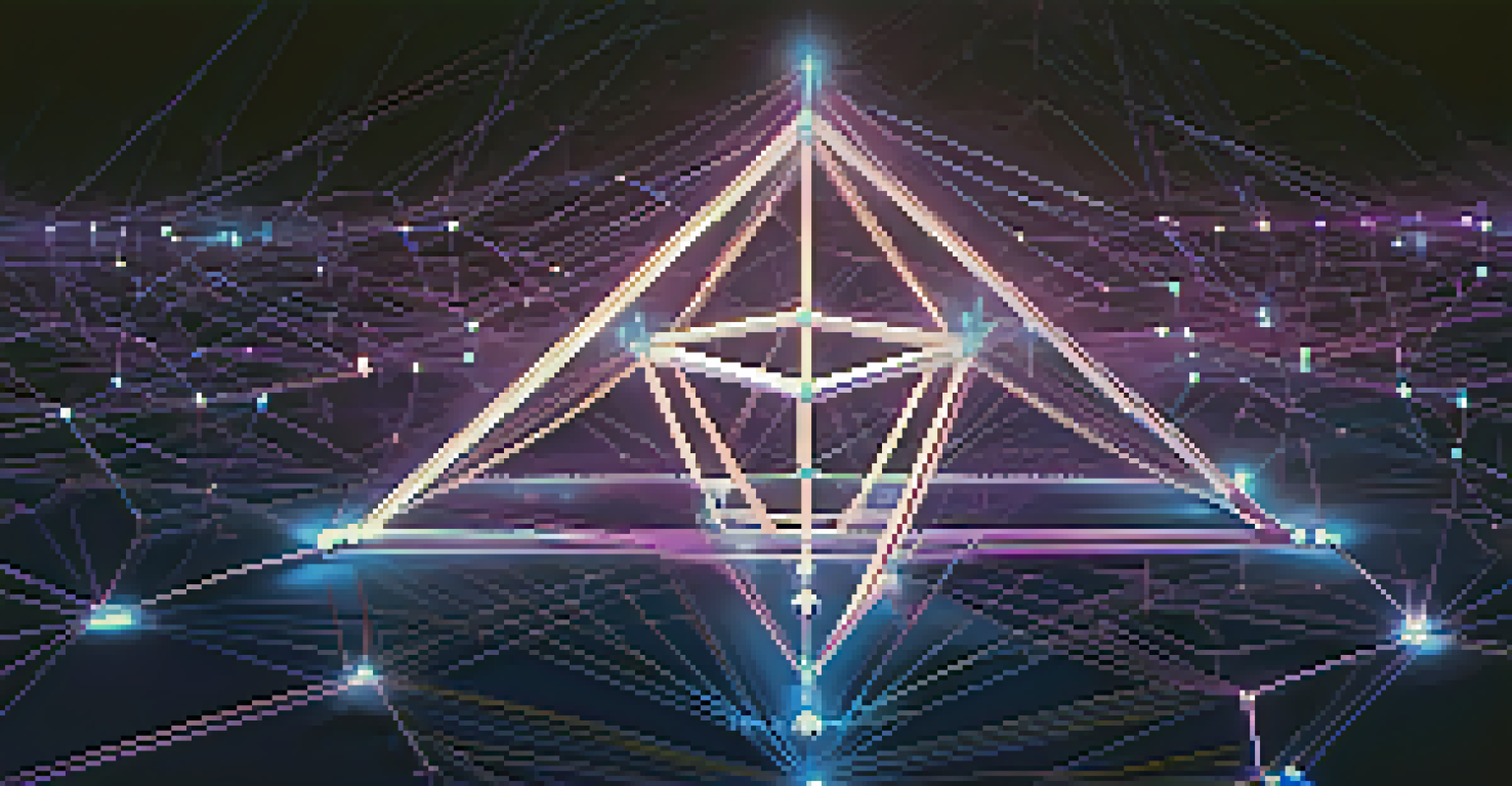Understanding Ethereum Development: Key Best Practices

What is Ethereum and Why Develop on It?
Ethereum is a decentralized platform that enables developers to build and deploy smart contracts and decentralized applications (dApps). Unlike traditional applications, which run on centralized servers, Ethereum operates on a blockchain, offering transparency and security. This unique architecture makes it an appealing choice for developers looking to leverage blockchain technology.
Ethereum is a world computer; it allows developers to write applications that can run anywhere.
One of the main reasons to develop on Ethereum is its robust community and support. With a vast network of developers and users, resources, and libraries are readily available to help you get started. Additionally, Ethereum's flexibility allows for various use cases, from finance to gaming, making it a versatile platform for innovation.
In essence, understanding Ethereum's fundamentals is crucial for any developer looking to tap into the potential of blockchain technology. By recognizing its features and advantages, you can better navigate the development landscape and create applications that stand out.
Setting Up Your Development Environment
Before diving into Ethereum development, it's essential to set up a proper development environment. Tools like Truffle, Ganache, and Remix can streamline your workflow and enhance your productivity. Truffle is a development framework that simplifies the process of building dApps, while Ganache provides a personal blockchain for testing.

Once you've installed these tools, it's also vital to familiarize yourself with Solidity, the programming language used for writing smart contracts on Ethereum. Solidity is similar to JavaScript, making it accessible even for those with a web development background. Learning Solidity will empower you to create contracts that can automate processes and interact with other contracts seamlessly.
Ethereum Basics for Developers
Understanding Ethereum's decentralized platform and its robust community is essential for developers aiming to build innovative applications.
By establishing a solid development environment and mastering the necessary tools, you'll be well-equipped to tackle Ethereum projects. This foundational step can significantly impact your success as a developer on the platform.
Best Practices for Smart Contract Development
When developing smart contracts, following best practices is crucial to ensure security and functionality. Always start with a clear design and plan for your contract's logic, as this helps prevent errors later in the process. Additionally, modularizing your code by using libraries and reusable components can improve readability and maintainability.
The only way to get the technology to work is to build it and use it.
Another essential aspect is thorough testing. Since smart contracts are immutable once deployed, rigorous testing is necessary to identify potential vulnerabilities. Use testing frameworks like Mocha and Chai to create comprehensive test suites that cover various scenarios and edge cases.
Lastly, always conduct security audits before deploying your smart contracts. Engaging with third-party auditors can provide an unbiased review of your code, helping to identify weaknesses and ensure your contract is robust. Following these practices can greatly reduce the risk of costly mistakes in your Ethereum projects.
Understanding Gas and Transaction Costs
Gas is a fundamental concept in Ethereum that you must understand as a developer. It's the fee required to conduct transactions or execute smart contracts on the Ethereum network. Essentially, gas ensures that users pay for the computational resources required for their transactions, helping to prevent spam and abuse of the network.
When developing dApps, it's essential to optimize your code to minimize gas consumption. High gas fees can deter users from engaging with your application, so finding ways to make your smart contracts more efficient is key. Techniques such as minimizing storage usage and avoiding complex computations can help reduce costs.
Optimizing Smart Contracts
Following best practices like thorough testing and security audits is crucial for developing secure and efficient smart contracts.
Monitoring gas prices is also crucial for both developers and users. By staying informed about network congestion and current gas rates, you can time your transactions more effectively and save on costs. Understanding gas dynamics will enhance your development process and improve user experience.
Leveraging Ethereum Libraries and Frameworks
Utilizing existing libraries and frameworks can significantly speed up your Ethereum development process. Libraries like OpenZeppelin provide secure and tested smart contract templates that you can use as a foundation for your projects. This not only saves time but also helps improve the overall security of your contracts.
Frameworks such as Hardhat and Brownie offer powerful tools for building and testing dApps efficiently. With features like local blockchain simulation and built-in testing environments, these frameworks enable developers to iterate quickly and effectively. Embracing these tools can streamline your workflow and enhance your productivity.
Incorporating established libraries and frameworks into your development process can lead to higher-quality applications. By leveraging the community's knowledge and experience, you can focus on creating unique features and functionalities rather than reinventing the wheel.
User Experience: Designing Intuitive dApps
A successful dApp not only relies on robust smart contracts but also needs to deliver a great user experience. Designing an intuitive interface is essential for attracting and retaining users. Think about how users will interact with your application and aim to create a seamless experience that minimizes friction.
Consider implementing features like wallet integration and user-friendly onboarding processes to simplify access to your dApp. Popular wallets like MetaMask can make it easy for users to connect and transact without requiring extensive technical knowledge. The easier you make it for users to engage with your dApp, the more likely they are to stick around.
Enhancing User Experience
Designing intuitive dApps with user-friendly features and gathering feedback is vital for retaining users in the competitive Ethereum space.
Finally, gather feedback from users and iterate on your design. Continuous improvement based on user input can help you identify pain points and enhance your application over time. Prioritizing user experience will set your dApp apart in the increasingly competitive Ethereum landscape.
Staying Updated in the Evolving Ethereum Ecosystem
The Ethereum ecosystem is constantly evolving, with new updates and trends emerging regularly. As a developer, it's crucial to stay informed about these changes to remain competitive and relevant. Following reputable sources, joining developer communities, and participating in forums can help you stay up to date.
Additionally, keeping an eye on Ethereum Improvement Proposals (EIPs) can provide insights into upcoming features and enhancements. Engaging with the community through events like hackathons and conferences can also foster valuable connections and knowledge sharing, allowing you to learn from others' experiences.

By actively participating in the Ethereum community and staying informed about developments, you'll be better equipped to adapt your projects and strategies. Embracing a mindset of continuous learning will not only enhance your skills but also contribute to your growth as an Ethereum developer.